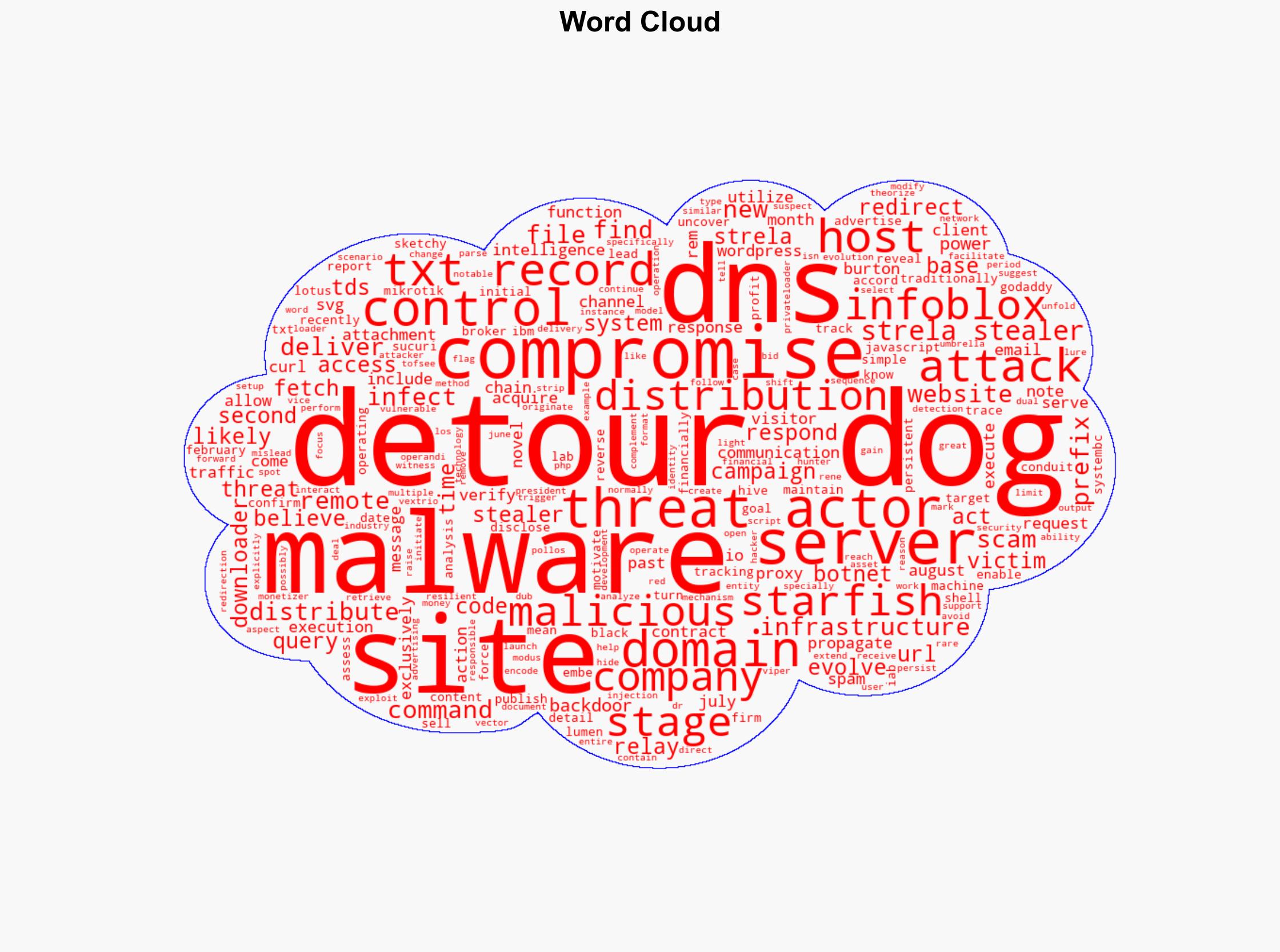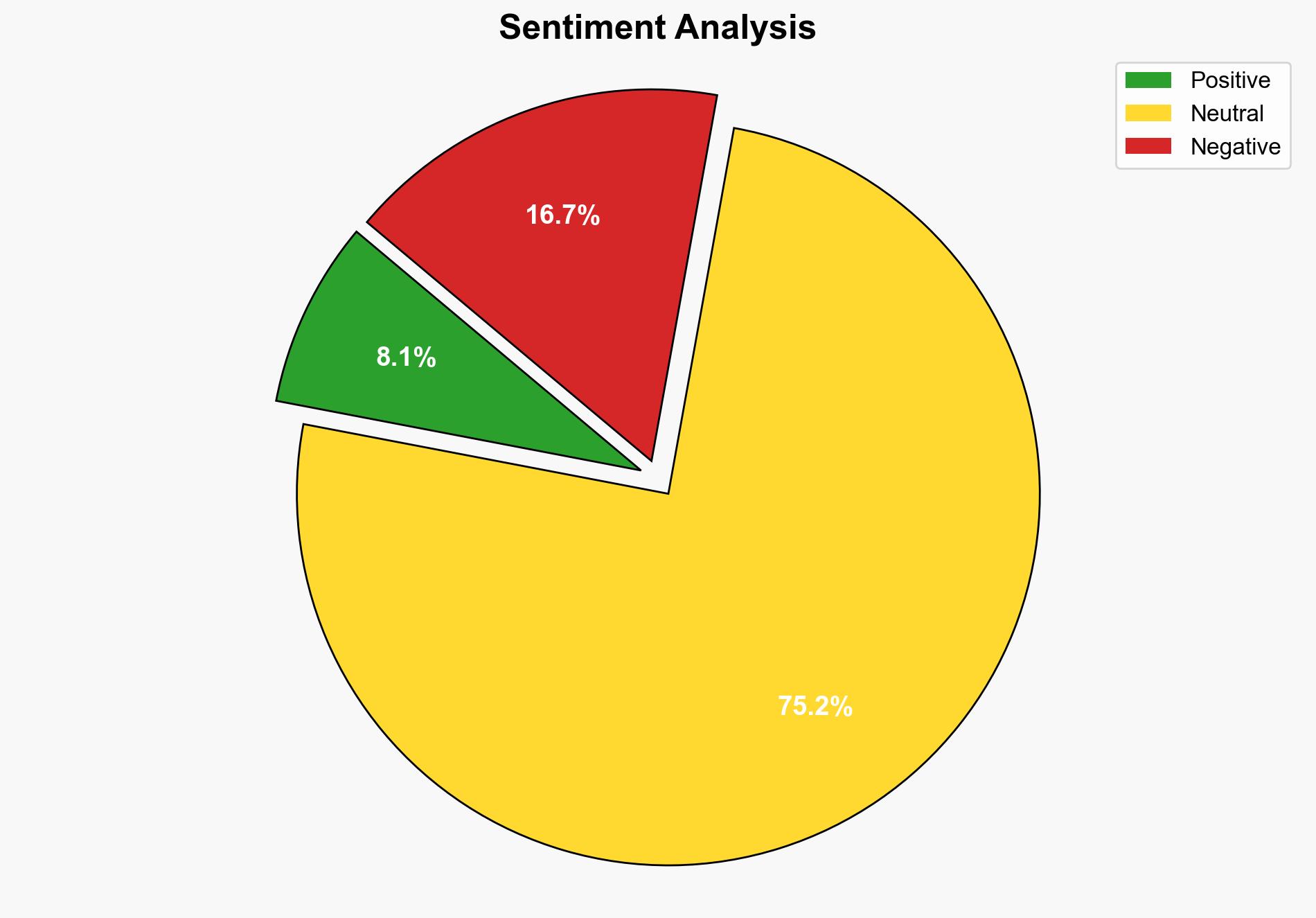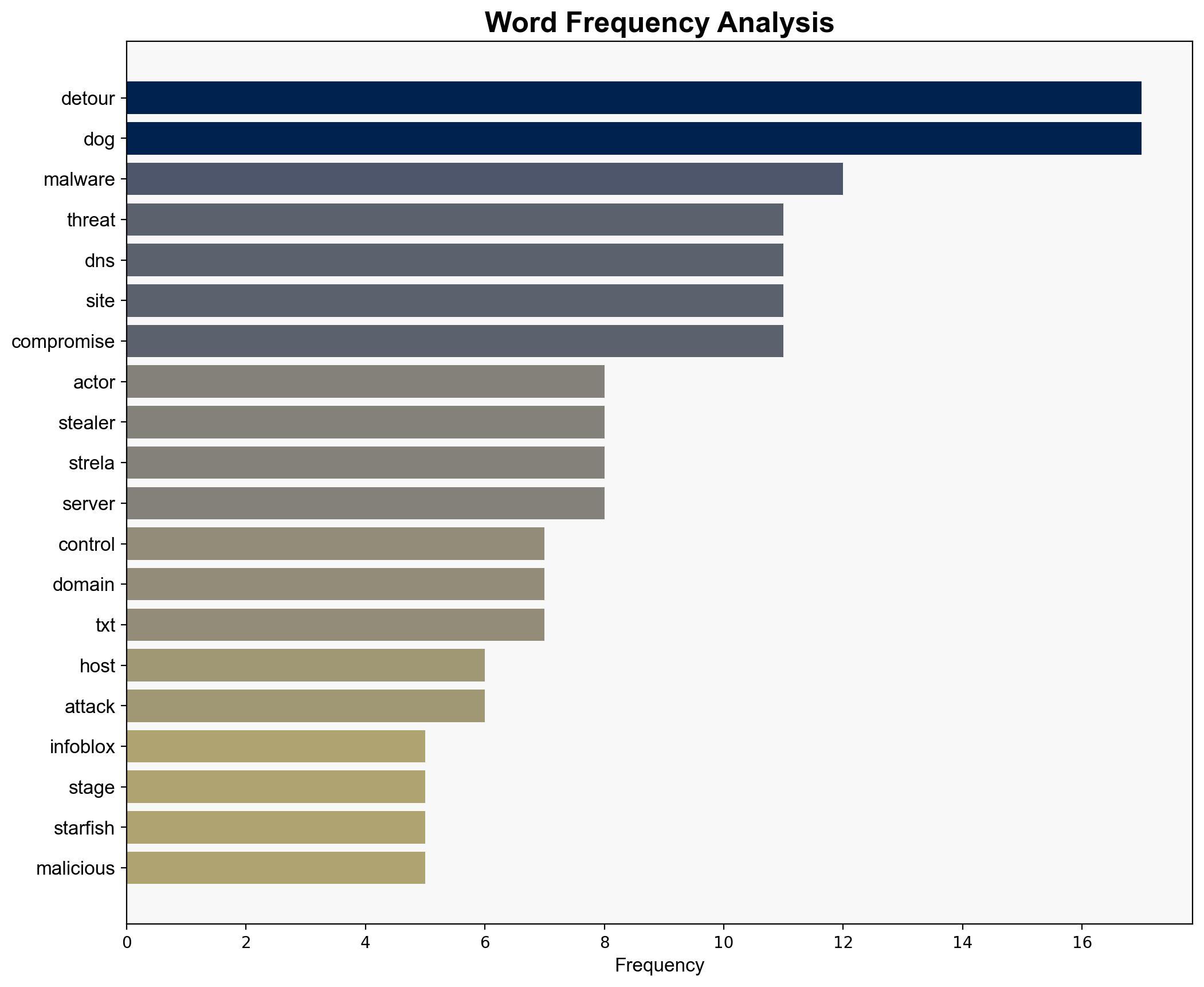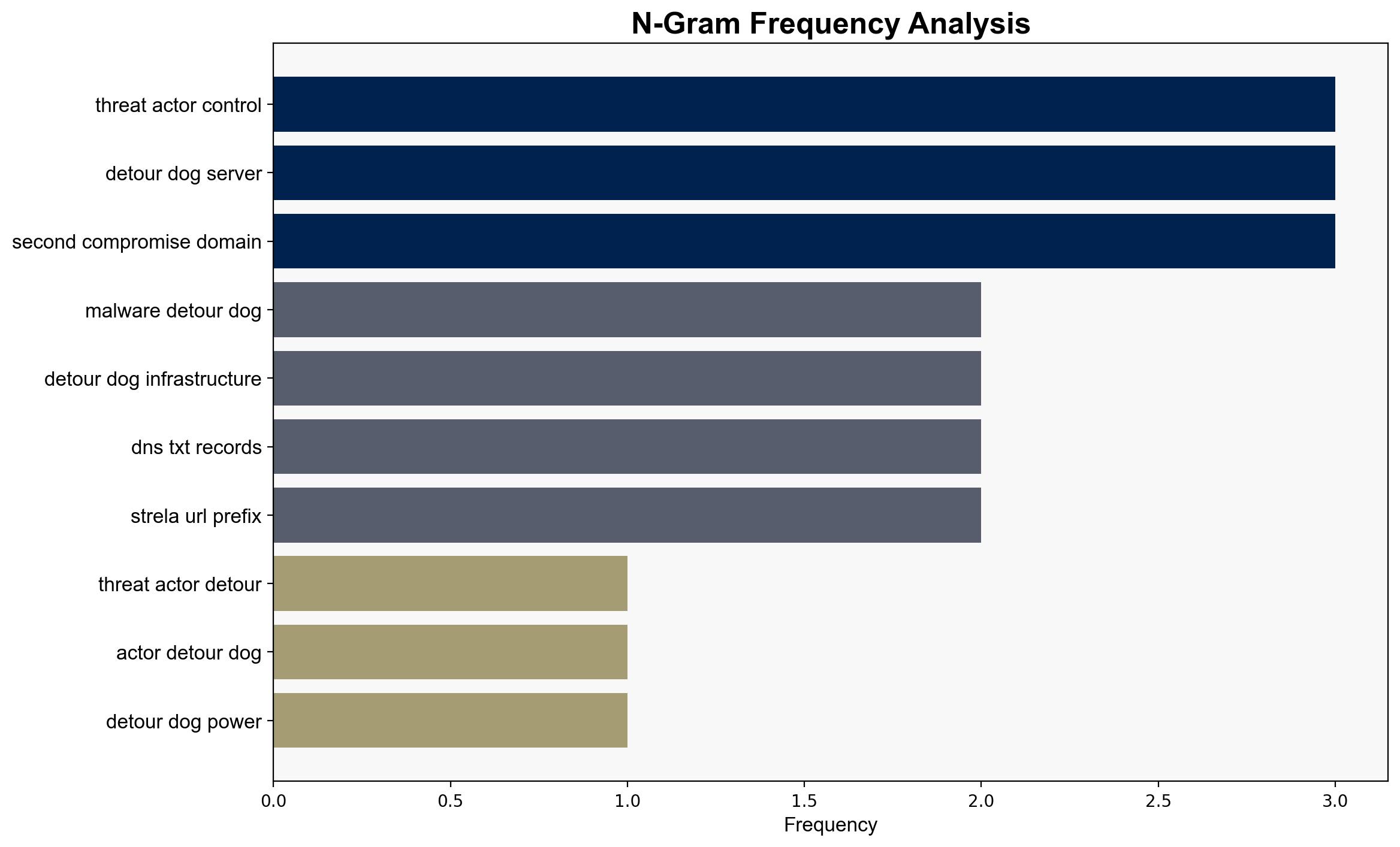Detour Dog Caught Running DNS-Powered Malware Factory for Strela Stealer – Internet
Published on: 2025-10-03
Intelligence Report: Detour Dog Caught Running DNS-Powered Malware Factory for Strela Stealer – Internet
1. BLUF (Bottom Line Up Front)
The Detour Dog threat actor is likely operating a sophisticated DNS-based malware distribution network, primarily for financial gain. The most supported hypothesis is that Detour Dog is functioning as an Initial Access Broker (IAB), leveraging DNS infrastructure to distribute the Strela Stealer malware. Confidence in this assessment is moderate due to the evolving nature of the tactics and the potential for deception. Recommended action includes enhancing DNS monitoring and collaboration with hosting providers to disrupt the infrastructure.
2. Competing Hypotheses
1. **Hypothesis A:** Detour Dog is primarily an Initial Access Broker (IAB) using DNS infrastructure to distribute Strela Stealer malware for financial gain. This hypothesis is supported by the use of DNS TXT records for command and control, the targeting of WordPress sites for injection, and the financial motivation inferred from the use of Traffic Distribution Systems (TDS) for monetization.
2. **Hypothesis B:** Detour Dog is part of a larger, state-sponsored cyber-espionage campaign using Strela Stealer as a tool for intelligence gathering. This hypothesis considers the sophisticated use of DNS for stealth and persistence, which could indicate a higher level of operational security typical of state actors.
Using Analysis of Competing Hypotheses (ACH), Hypothesis A is better supported due to the financial motivations and the operational pattern consistent with IAB activities, such as the use of botnets and spam for distribution.
3. Key Assumptions and Red Flags
– **Assumptions:** It is assumed that the primary motivation is financial, based on observed monetization strategies. The infrastructure’s complexity suggests a high level of technical capability.
– **Red Flags:** The potential for deception is high, as the use of DNS-based C2 channels can obscure true intentions. The lack of direct attribution to a state actor leaves room for alternative explanations.
– **Blind Spots:** Limited visibility into the full scope of Detour Dog’s operations and potential connections to other threat actors or campaigns.
4. Implications and Strategic Risks
The use of DNS for malware distribution presents a significant challenge for detection and mitigation, potentially leading to widespread compromise of systems. If Detour Dog is indeed an IAB, this could facilitate further attacks by other cybercriminals. The potential for escalation exists if the infrastructure is repurposed for more destructive campaigns. Economically, affected organizations may face increased costs for remediation and loss of trust.
5. Recommendations and Outlook
- Enhance DNS monitoring capabilities to detect anomalous patterns indicative of C2 activity.
- Collaborate with domain registrars and hosting providers to identify and dismantle malicious infrastructure.
- Scenario Projections:
- **Best Case:** Successful disruption of Detour Dog’s infrastructure limits further distribution of Strela Stealer.
- **Worst Case:** Detour Dog adapts tactics, leading to increased malware proliferation and potential data breaches.
- **Most Likely:** Continued evolution of tactics with intermittent disruptions by cybersecurity efforts.
6. Key Individuals and Entities
– **Detour Dog:** The primary threat actor group.
– **Strela Stealer:** The malware being distributed.
– **Infoblox:** The threat intelligence firm tracking Detour Dog.
– **MikroTik Botnet, Tofsee, Privateloader:** Associated tools and networks.
7. Thematic Tags
national security threats, cybersecurity, counter-terrorism, regional focus




